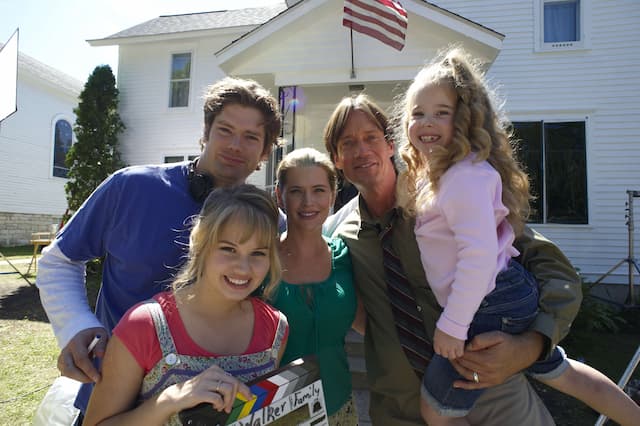Don't Make This Mistake. Fill Your Creativity Bucket - Lisa E Betz

I like to imagine a big bucket in my subconscious mind, which holds all the potential raw material we need to come up with creative thoughts. Obviously, the more you fill your creativity bucket, the more creative resources you have to draw from.
Why do I care about what’s in my creativity bucket?
Creative thinking is a vital life skill. We need creative thinking to:
- Solve problems
- Overcome obstacles
- Do ministry
- Build things
- Find better ways to do something
- Discover breakthroughs
- Resolve relationship conflicts
- Etc.
Who needs strong creative thinking skills? Quarterbacks, brain surgeons, teachers, therapists, auto mechanics, detectives, nurses, authors, grandparents. In other words, everybody.
We mistakenly think “adulting” leaves no time for frivolous creativity
Unfortunately, we grownups view “creative” activities such as building with blocks, make believe, and aimless doodling as a childish waste of time. We think we have more important things to do. Our job is to be productive, not to goof off doing artsy craftsy things.
When we neglect to fill our creativity buckets, it impairs our ability to have truly creative ideas. Plus, we’re missing out on fun activities that feed our souls and bring us joy.
As Anna Quindlen put it, “You cannot be really first rate at your work if your work is all you are.”
Or, as Pablo Picasso said,
As Picasso said, “Every child is an artist. The problem is staying an artist when you grow up.”
So, how do we “stay an artist”? How do we become a more creative thinker and problem-solver? By intentionally filling our creativity buckets.
How do we fill our creativity bucket?
One cool thing about filling our creativity buckets is that it doesn’t matter how good or bad the end product is. It’s all about the experience, and the more variety of creative experiences, the better.
Here are five broad categories of activities that can fill your creativity bucket, along with ten simple ideas for you to try. There’s sure to be something fun for everyone.
Making stuff
There’s something particularly effective about working with your hands. Anything you make with your own hands (or voice) can fill up your creativity bucket. Here are ten ideas to try.
- Journal. Writing longhand counts as making something with your hands. Try it.
- Find rocks, sticks, or random junk. Paint them to look like animals or cars.
- Make up a silly song, poem, or story.
- Create a new flower bed or revise an old one. (Just weeding doesn’t count.)
- Google a simple craft you can make using everyday items. Do it with your kids, grandkids, or a friend.
- Build a fort out of blankets, snow, sticks, hay bales, or whatever you have.
- Invent something with Legos, blocks, K’Nex or other building toys.
- Make fabric art. Knit, crochet, weave, sew.
- Bake cookies, pretzels, or bread with a child. Choose something that requires touching the dough.
- Create a zoo of creatures from modeling clay, playdough, or homemade dough.
Play
Yes, I am officially telling you that playing is good for you. So, what are you waiting for? This category includes everything from hiking to sports, and board games to make believe.
- Play yard games with the family
- Hike with a friend on a nature trail
- Go canoeing or kayaking
- Invite friends over to play cards
- Have a pretend tea party with some youngsters. Bonus points for dressing up and using fancy teacups.
- Take turns making up stories, or play an add-to-the-story game
- Play a group game like charades, Pictionary, or Taboo.
- Pick a fairy tale or other familiar story and act it out with your grandkids
- Buy a new board game and learn how to play it, or have friends teach you how to play one of their favorite games.
- Challenge yourself with puzzles and brain teasers.
Exploration
Exploring means going new places, trying new things, or looking at the everyday world through a new lens. Do things intentionally to climb out of your rut.
- Take a new route to the store. See how many different routes you can take.
- Go through your local neighborhood and look for as many different purple flowers as you can find. (Choose any item you like, the goal is to be more observant and notice things you’ve missed before.)
- Visit a museum.
- Try a new restaurant.
- Go on a tour of some kind. A food tour, a tour of a local historic building, a plan tour…
- Go to a different grocery store or library other than your usual one.
- Use a telescope or microscope to see new aspects of your world. (Your local park may have an astronomy club that occasionally holds a sky watch program.)
- Explore virtually by watching a documentary of a place you’d love to visit.
- Plan a trip to a bucket list destination. Choose at least five specific things to see or do. (It’s OK if you can’t actually go.)
- Find five items in your local store that you’ve never used and never heard of.
Experimentation
Experiments aren’t just for scientists. We all benefit from seeing what happens when we do something a different way, or when we try things just to see what happens. This is where you get to make glorious mistakes, and possibly discover something awesome.
- Play with your food. Make small adjustments to a recipe to see what happens.
- Take a hobby you enjoy and try something new with it. A new design, a new material…
- Read a story to your kids with different voices and accents.
- Do an old chore a new way.
- Rearrange the furniture (or pictures) in a room or two, just to see how it changes things.
- Invent a smoothie or soup without using a recipe.
- Create mixed media art, by combining paint, fabric, cardboard, wire, etc.
- Crate a Rube Goldberg contraption.
- Devise a new way to do a chore that makes it easier, or more fun.
- Devise three different ways to build something. For example, build a bird house with Legos, wood scraps, and cardboard.
Learning
Learning is good for the brain. Don’t be afraid to follow your curiosity, even when the topic doesn’t seem practical or useful. If you find medieval heraldry or early twentieth century dolls fascinating, learn about it. Trust your subconscious to make use of those random facts floating around in your creativity bucket.
- Go on a tour of someplace that interests you.
- Go to a free library talk.
- Teach your kids, grandkids or neighbors how to do something you enjoy, like woodworking, knitting, beekeeping, or gardening.
- Learn how to do a new hobby.
- Join a book club or other special interest group.
- Take a class. Libraries, high schools, and other organizations often offer inexpensive classes.
- Ask a friend to teach you something they are good at.
- Learn how to make something or do some activity by following along with a how-to video.
- Watch documentaries on a subject that interests you.
- Attend a historical reenactment, or crafts fair, and ask questions. Most of the participants love talking about their subject.
How empty is your bucket?
The experts tell us that if we hope to be truly original, we can’t afford not to be intentional about refilling our creativity buckets. How will you fill yours this week?
I challenge you to do some creative activity today.
AND
I challenge you to schedule a fun activity with someone else in the next two weeks. Take a pottery class with a friend, make cookies or messy art with your grandchild, or invites friends over to play games. Have fun filling your creativity bucket!






